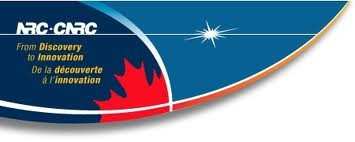Discovery Comes As Regulators Gear Up To Certify Commercial Turbojets Against Engine Ice Buildup Later This Year
The National Research Council of Canada (NRC) has confirmed the importance of humidity as a critical factor in ice crystal accretion in the engine core. Part of a joint research project with NASA, this discovery brings NRC Aerospace researchers one step closer to fundamental understanding of the physics involved in the ice crystal engine icing phenomenon—and one step closer to finding a solution.

“The importance of humidity to ice crystal buildup in aircraft engines has long been suspected but has only now been confirmed,” said Jerzy Komorowski, General Manager of NRC Aerospace. “This discovery couldn’t come at a better time. Regulators in North America and Europe are now gearing up to certify commercial turbojet engines against this type of ice build-up beginning later this year, and they will be using current research data from NRC and its collaborators.”
The experiment set out to explore the effect of wet bulb temperature (dependent on air temperature, humidity and pressure) on accretion behavior. NRC researchers tested a symmetrical airfoil from a previous experiment at pressures of 44.8 kPa and 93kPa, usually at 0.25 Mach number, over a range of freestream liquid water and ice water concentrations, total air temperatures greater than 0°C and humidity levels. They maintained wet bulb temperature typically at +2°C or -2°C, based on dry total conditions (i.e. without ice or water injection). The limited test results confirmed that accretion behavior is very sensitive to wet bulb temperature.
This research builds on the National Research Council of Canada’s demonstrated capability to create significant ice accretion in a simulated aircraft engine test rig with frozen ice crystals in air temperatures above 0ºC. Concluded three years ago, this collaborative project with the Boeing Company to prove that ice crystals could form in an aircraft engine at temperatures above the melting point of ice represented a significant step forward in the understanding of how ice builds up in aircraft engines under ice crystal conditions.
Many jet engine power-loss events have been observed since 1990 at altitudes above 23,000 feet (7000m), usually considered to be the upper limit for the altitude at which water droplets can exist as liquid. These events, which have typically occurred in the anvil region of deep convective systems at tropical latitudes, have included engine rollback, flameout, stall, as well as damage to the low pressure compressor from shed ice. In a comprehensive review of 46 power-loss incidents observed since 1990, it is now generally believed that such events result from atmospheric ice crystals entering the engine core, partially melting, and then refreezing on internal components.
Although many of these events have been documented, researchers do not understand the ice crystal accretion process well enough to either simulate or replicate it in sea level engine icing certification tests. For the past several years, however, NRC Aerospace researchers have been conducting experiments to determine the physics involved in ice crystal engine icing, building on past successes and gaining insights into the phenomenon. Their ultimate goal is to begin modeling the phenomenon to predict and prevent it, and to ensure the safety of the travelling public.
 ANN FAQ: Contributing To Aero-TV
ANN FAQ: Contributing To Aero-TV Aero-News: Quote of the Day (12.10.25)
Aero-News: Quote of the Day (12.10.25) ANN's Daily Aero-Term (12.10.25): North Atlantic High Level Airspace (NAT HLA)
ANN's Daily Aero-Term (12.10.25): North Atlantic High Level Airspace (NAT HLA) Airborne 12.08.25: Samaritans Purse Hijack, FAA Med Relief, China Rocket Fail
Airborne 12.08.25: Samaritans Purse Hijack, FAA Med Relief, China Rocket Fail Airborne-Flight Training 12.04.25: Ldg Fee Danger, Av Mental Health, PC-7 MKX
Airborne-Flight Training 12.04.25: Ldg Fee Danger, Av Mental Health, PC-7 MKX



